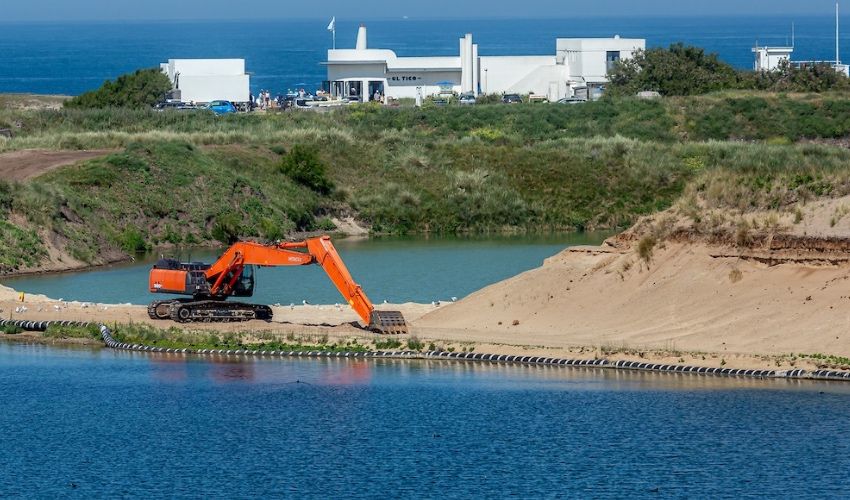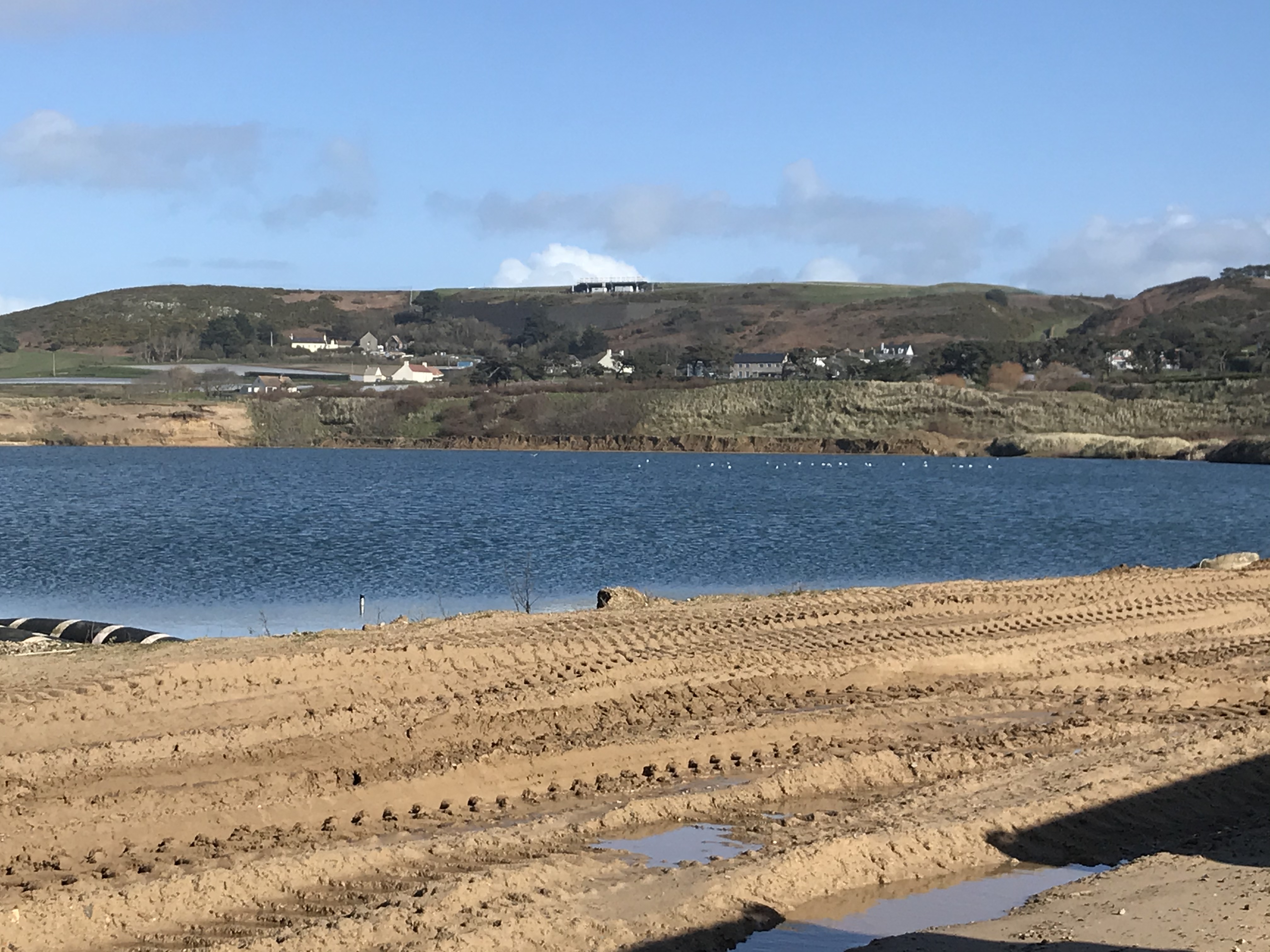


A sand quarry in the middle of St. Ouen’s Bay remains a potential waste dump for building rubble and glass, the Government has said, although it would be a “delicate piece of work”.
Speaking to Scrutiny recently, Infrastructure Minister Tom Binet said that new waste sites needed to be found as La Collette was full and not all inert material could be recycled.
The Bridging Island Plan – which sets all planning policies in Jersey – puts inert waste management into the hands of the private sector, and safeguards La Collette, La Gigoulande Quarry in St. Peter’s Valley, Broadlands on Mont Fallu and Barette Plant Hire off Beaumont Hill as management and/or disposal sites.
However, the BIP adds that the large body of water formed by over a century of quarrying at Simon Sand and Gravel opposite El Tico could be “restored” using waste.
It adds: “Restoration, where it involves the importation of material onto the site, should be undertaken using clean, inert material from natural sources as far as possible and practicable.”
Deputy Binet said: "If we do go out to the private sector [for inert waste dumping], it would be a joint operation with Government to ensure that what is done is done the correct way.
"Particularly, looking at the Simon Sand option in St. Ouen’s Bay, that is a delicate piece of work. It is not to say we will go there but if we do, we have to be cautious because there would be a restoration.”
The quarry sits in the middle of the Coastal National Park and in the Protected Coastal Area, so has the highest level of protection against development.

Pictured: One of the issues with the water in the sand quarry is that it is contaminated with a manmade chemical linked to causing cancer, birth defects and other health problems.
However, the Environment Department has consistently said that the quarry should be filled in at the end of its useful life rather than left as a wetland habitat, as the owner has previously argued.
An added problem is the fact that the water in the current lake, which percolates in and out of St. Ouen’s Bay, is heavily contaminated with a manmade chemical, called PFOS, which was an ingredient of fire-fighting foam sprayed at the Airport.
Past Environment Minister John Young had wanted the quarry to close at the end of next year, when its current extraction permit runs out, but he changed his mind when independent inspectors who reviewed the BIP late last year recommended that it should be allowed to continue.
The family-owned company that has owned and run the quarry since 1909 is now negotiating with the Government on how much sand it can remove - which could extend the life of the quarry by a decade, depending on demand - and how the site should be restored.
A spokesman said: “The requirement for a reinstatement of landscape, using inert waste, has been an expectation of government since 2018. The policy framework - via the BIP - has now been changed to a presumption for sand extraction from the site.
“Sand extraction and reinstatement of landscape are linked so one can’t happen without the other. Discussions with various government departments on how best to achieve these objectives are ongoing and are at the early pre-application-advice stage.”
He added: “Sand extraction and production have been scaled back greatly over the last 12 months although limited sales have continued. The ability to return to full-scale extraction is linked directly to the permission being granted which is a requirement needed as part of the Bridging Island Plan.”
However, not everyone is happy that the quarry could be filled in with inert waste, even if it is “clean” and “from natural sources as far as possible and practicable,” as the BIP dictates.
The National Trust has long been concerned about the impact of dumping waste on the wider St. Ouen’s Bay.
Chief Executive Charles Alluto said: “If the Government is minded to further explore the landfill option rather than enforcing the current planning conditions, the Trust would suggest that this would require a further planning application together with a comprehensive Environmental Impact Assessment, Restoration Strategy and Aftercare Strategy.
“This would be in line with the Government’s stated requirement for full transparency and public consultation.
“Also, the sand quarry and a large area of St. Ouen’s Bay suffers from extensive PFOS pollution and, therefore, there is real risk that any landfill could cause the pollution to spread into nearby water extraction wells.
“The Trust would therefore recommend that this option should not even be considered until the outcomes of the current hydrogeological study are full known and published.
“Given that the acceptable levels of PFOS are on a downward trajectory, the Government will obviously need to carefully consider its options in this respect.”
The Government has also mooted the possibility of further reclamation to deal with waste.
The BIP also identifies reclamation as one way to mitigate against rising sea levels caused by manmade climate change.
Comments
Comments on this story express the views of the commentator only, not Bailiwick Publishing. We are unable to guarantee the accuracy of any of those comments.